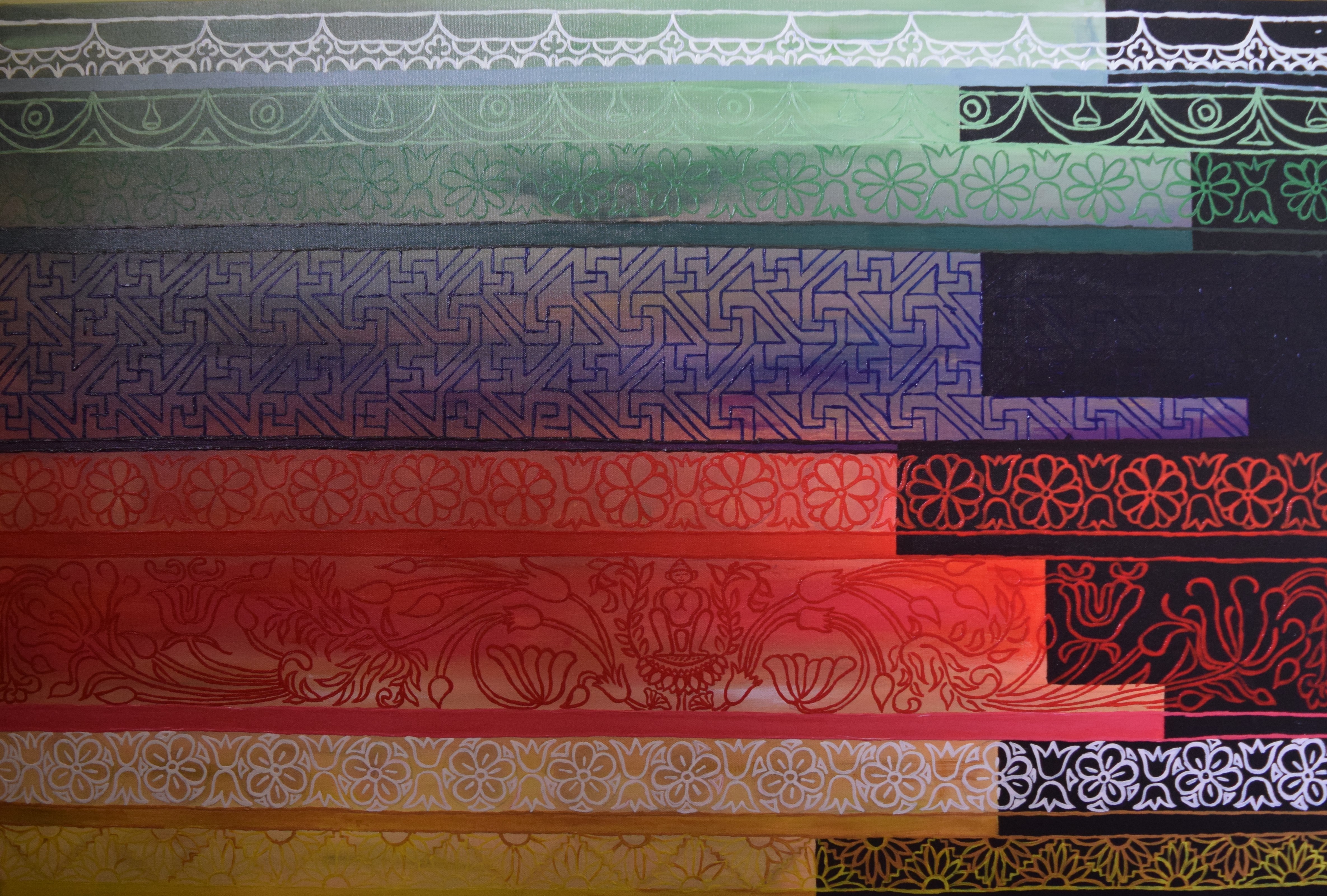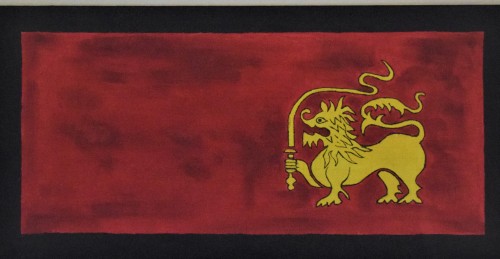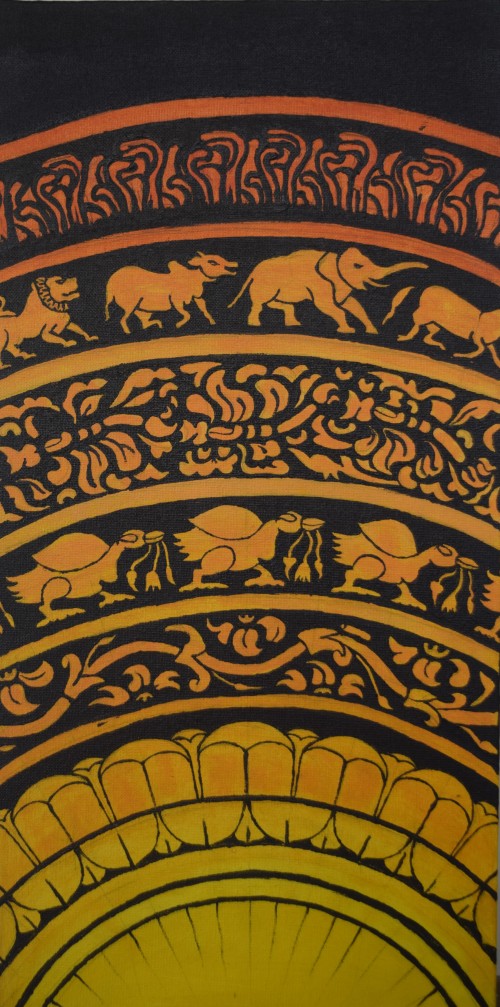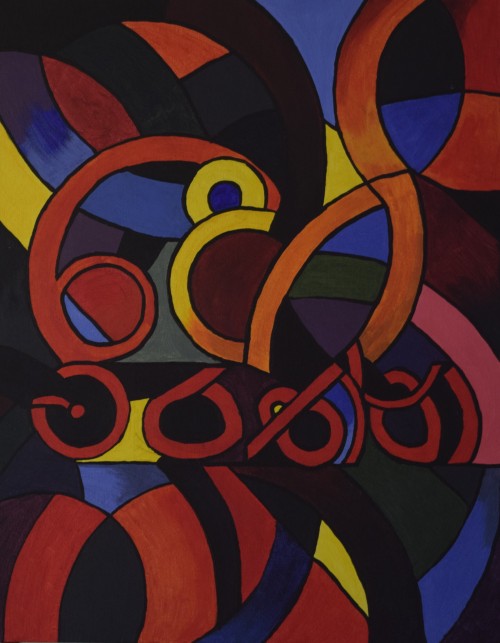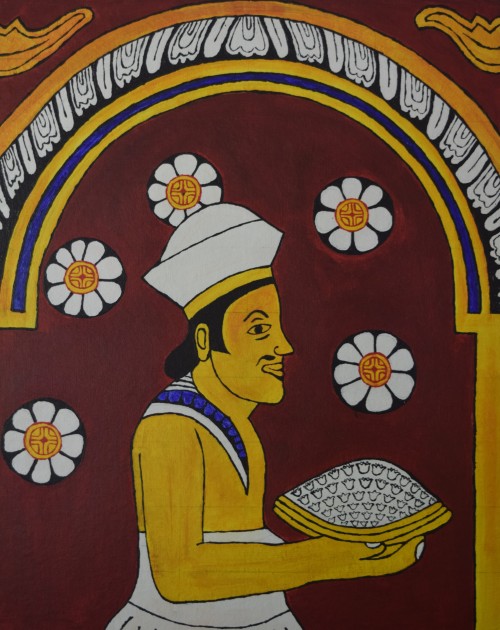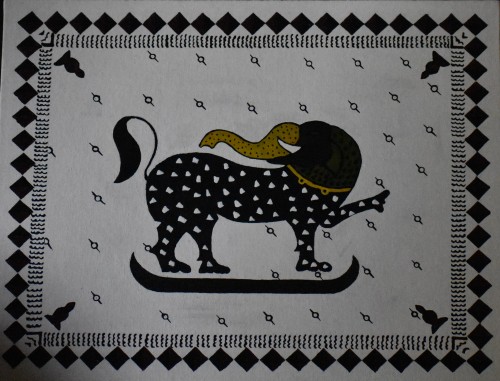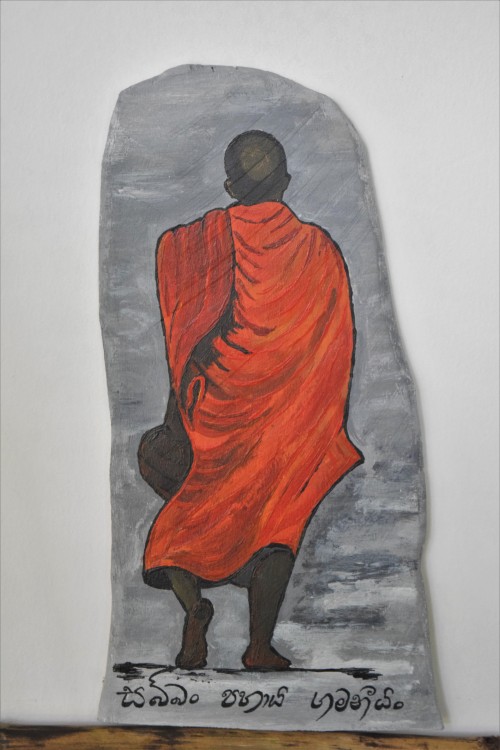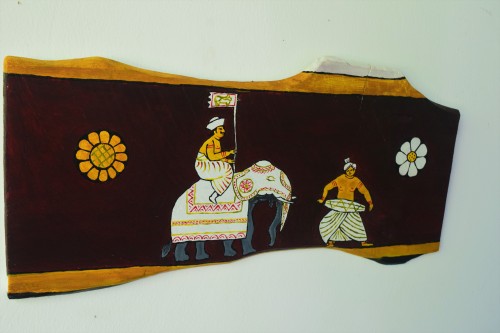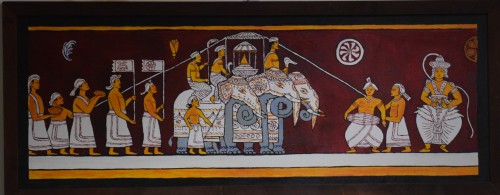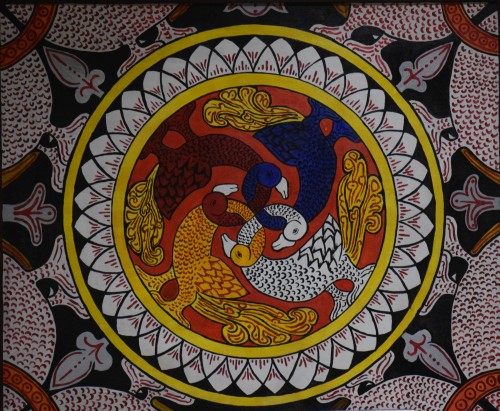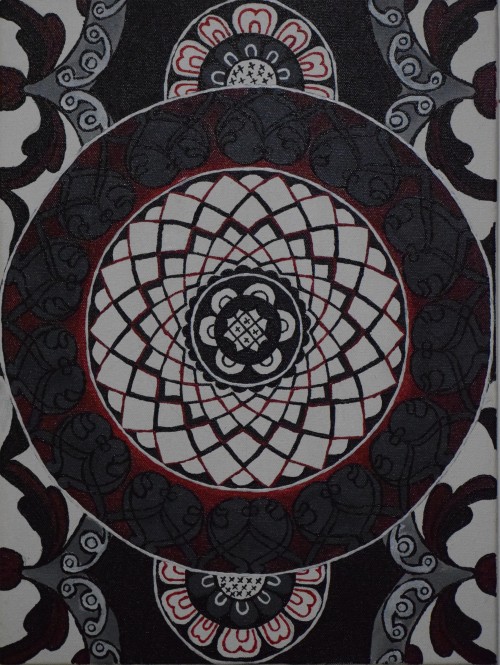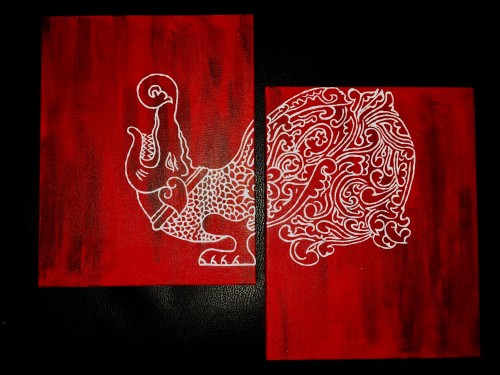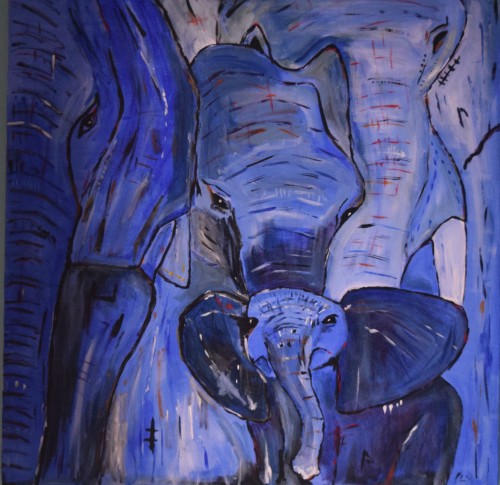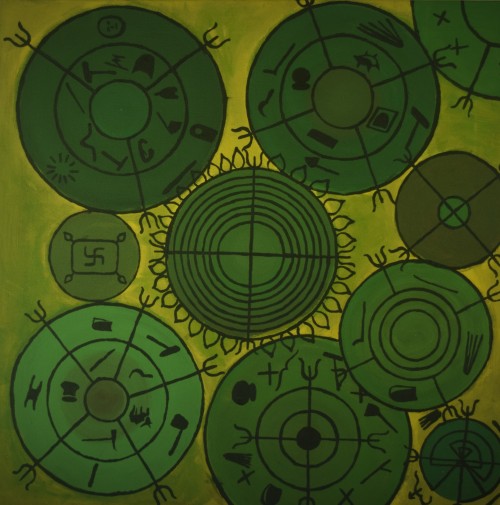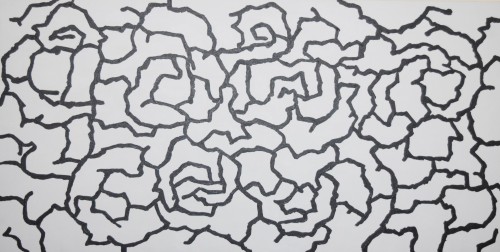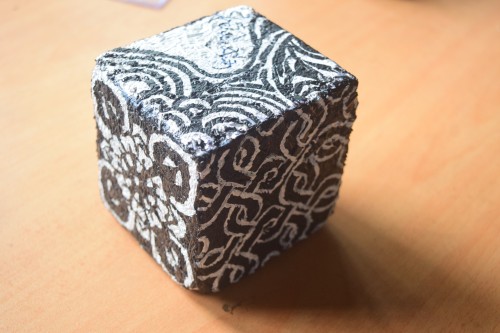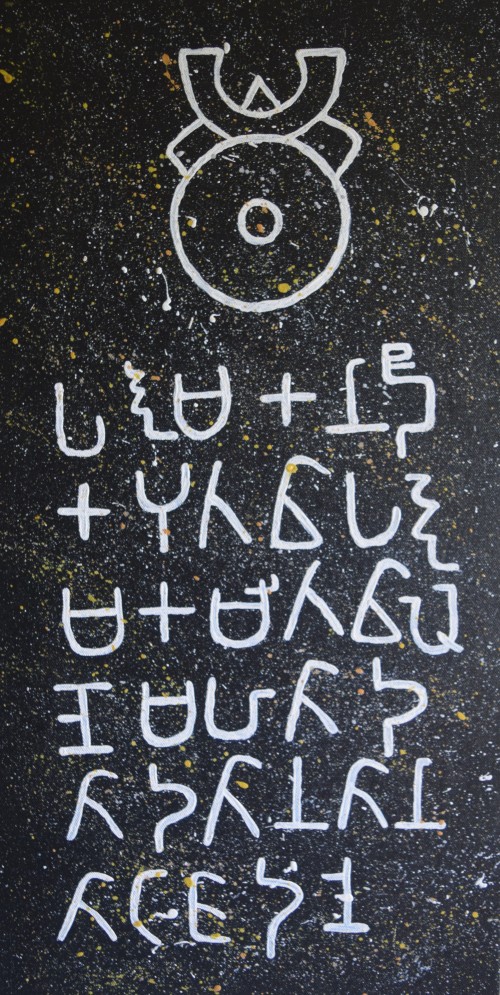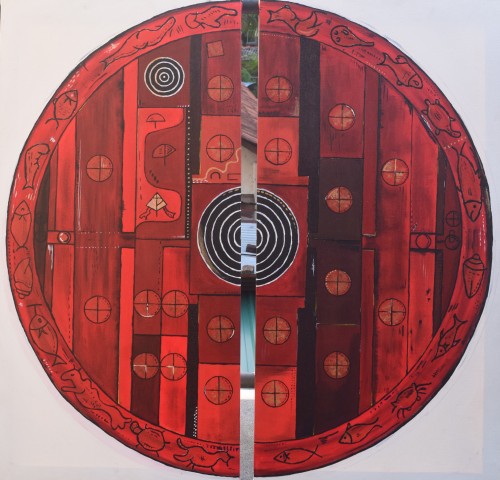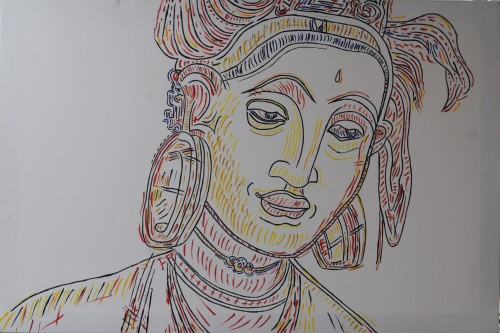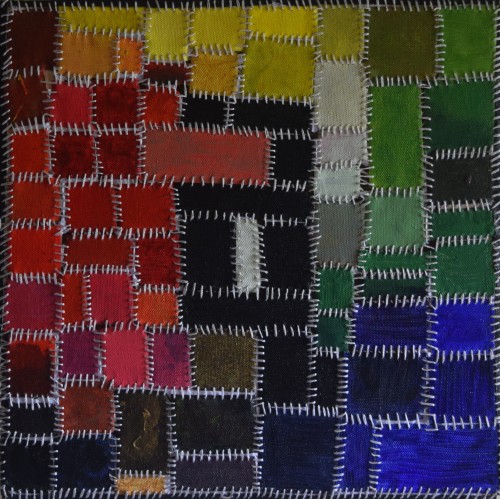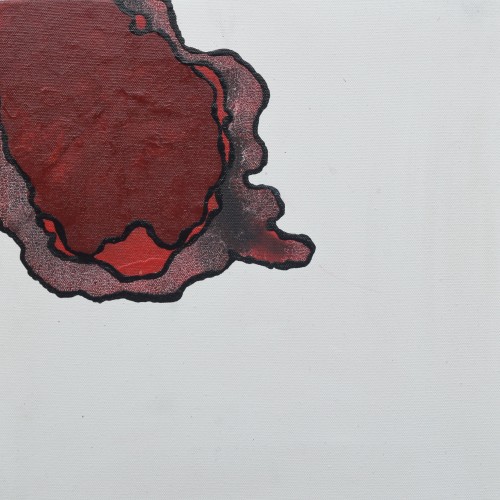Terms and Conditions of Usage
Access to and the use of the www.srilankanartgallery.com website ("Site") is subject to the following terms and conditions.
By using this Site, you (“you” or the “Member”) agree to these terms and conditions. However, if you do not agree with all or any of these terms and conditions, you are advised to exit this Site immediately.
As a visitor, you are responsible for reviewing the information posted online to obtain timely notice of any such changes. By using this Site after any such changes, you agree to comply with and be bound by the terms and conditions as changed.
1. Description of Service
Sri Lankan Art Gallery and Kala Pola 2022 are providing the Member with access to buy and sell artwork for Sri Lankan artists. John Keells Foundation (JKF) is offering this Site as a corporate social responsibility initiative. Each Member must provide (1) all equipment necessary for his or her own Internet connection and (2) provide for Member’s access to the Internet, and (3) pay any fees related to such connection.
2. Disclaimer
Although we attempt to keep all information in the server accurate and up to date, the accuracy and timeliness of the information provided cannot be guaranteed.
We hope that you will find the information helpful and easy to use, but we provide all content for informational purposes only and make no representations or warranties of any kind regarding the same. John Keells Foundation, its management and owning company disclaim all liability of any kind whatsoever arising out of the use of, or inability to use, its WWW servers and the information contained on them.
Use of this Site for any purpose other than that for which it was designed is unauthorized and prohibited.
3. Limitation of Liability
Sri Lankan art gallery and Kala Pola 2022 shall not be liable for any damages whatsoever, and in particular Sri Lankan Art Gallery and Kala Pola 2022 shall not be liable for any special, indirect, consequential, or incidental damages, or damages for lost profits, loss of revenue, or loss of use, arising out of or related to the site or the information contained in it, whether such damages arise in contract, negligence, tort, under statute, in equity, at law, or otherwise, even if Sri Lankan Art Gallery and Kala Pola 2022 have been advised of the possibility of such damages. Some jurisdictions do not allow for the limitation or exclusion of liability for incidental or consequential damages; therefore, some of the above limitations may be inapplicable.
4. Indemnification
The Member agrees to indemnify and hold Sri Lankan Art Gallery and Kala Pola 2022, its parents, subsidiaries, affiliates, officers and employees, harmless from any claim or demand, including attorneys’ fees and costs, made by any third party due to or arising out of the Member’s use of the Site, the violation of this Agreement, or violation of any law by the Member.
5. Disclaimer Regarding Accuracy of Artist’s Information
Specifications and other information regarding artwork for sale on the Site have been provided by individual sellers and are not verified by Sri Lankan Art Gallery and Kala Pola 2022. While Sri Lankan Art Gallery and Kala Pola 2022 make every effort to ensure that the information on the Site is accurate, we can make no representations or warranties as to the accuracy or reliability of any information provided on the Site.
Sri Lankan Art Gallery and Kala Pola 2022 make no warranties or representations whatsoever with regard to any product provided or offered by any seller, and you acknowledge that any reliance on representations and warranties provided by any Artist shall be at your own risk.
6. Information for Buyers
Purchase of items from this Site are governed by the terms set forth in the “Buyers Terms and Conditions” on this site.
Unless otherwise stated, all prices on the Site are in Sri Lankan Rupees. The currency converter placed on the site will generate an approximate value of the artwork in the specified currency.
JKF will not be responsible for any transactions between the Buyer and the Artist.
7. Compliance with Laws
Member assumes all knowledge of applicable law and is responsible for compliance with any such laws. Member may not use the Site in any way that violates applicable state law, international law, regulations, or other government requirements. Member further agrees not to transmit any material that encourages conduct that could constitute a criminal offense, give rise to civil liability, or otherwise violate any applicable local, state, national, or international law or regulation.
8. Copyright and Trademark Information
By submitting to Sri Lankan Art Gallery and John Keells Art Gallery any images of artwork for sale on the Site (“Images”), you warrant and represent that you own all rights, including but not limited to all copyright rights, in and to the Images. You grant to Sri Lankan Art Gallery and Kala Pola 2022 the worldwide, perpetual, irrevocable, royalty-free, sub-licensable right and license to reproduce and prepare derivative works of the Images for the purpose of advertising the Images for sale on the Site. To the extent that you do not own all rights in and to the Images or that Sri Lankan Art Gallery and Kala Pola 2022’s use of any of the Images as permitted under this Agreement infringes or otherwise violates the rights of any third party, you agree to indemnify and hold Sri Lankan Art Gallery and Kala Pola 2022 harmless from any claims or demands, including attorneys’ fees and costs incurred by Sri Lankan Art Gallery and Kala Pola 2022 with respect thereto.
All images on the Site are either owned or licensed by the Sri Lankan Art Gallery and Kala Pola 2022 and may not be reproduced or used in any manner without the express written permission of Sri Lankan Art Gallery and Kala Pola 2022 and, if appropriate, the relevant artist. Copyright © 2012 Sri Lankan Art Gallery, LLC. All rights reserved. All physical artwork is owned solely by the individual artists represented here and are subject to Sri Lankan and International copyright laws.
9. Botnets
Sri Lankan Art Gallery and Kala Pola 2022 retain the right, at our sole discretion, to terminate any accounts involved with botnets and related activities. If any hostnames are used as command and control points for botnets, Sri Lankan Art Gallery and Kala Pola 2022 reserve the right to direct the involved hostnames to a honeypot, loopback address, logging facility, or any other destination at Sri Lankan Art Gallery and Kala Pola 2022’s discretion.
10. Other Terms
If any provision of this Agreement shall be unlawful, void or unenforceable for any reason, the other provisions (and any partially-enforceable provision) shall not be affected thereby and shall remain valid and enforceable to the maximum possible extent. You agree that this Agreement and any other agreements referenced herein may be assigned by Sri Lankan Art Gallery in its sole discretion, to a third party in the event of a merger or acquisition. This Agreement shall apply in addition to, and shall not be superseded by, any other written agreement between us in relation to your participation as a Member. Member agrees that by accepting this Agreement, Member is consenting to the use and disclosure of his or her personally identifiable information and other practices described in the Sri Lankan Art Gallery and Kala Pola 2022 Privacy Statement.
11. Privacy Policy
For each visitor to our Web page, our Web server automatically recognizes the consumer's domain name and e-mail address (where possible).
Where possible we collect information including, but not limited to, the domain name and e-mail address of visitors to our Web page. We will collect the e-mail addresses of those who post messages to our ‘comments’ page and who communicate with us via e-mail. We will also collect aggregate information on what pages consumers access or visit, user-specific information on what pages consumers access or visit and information volunteered by the consumer, such as survey information and/or site registrations.
The information we collect is used for internal review, used to improve the content of our Web page and customize the content and/or layout of our page for each individual consumer. The information will not be shared with other organizations for commercial purposes.
If you sign up for monthly updates from the Site on-line, you may receive periodic mailings from us with information on new art work updates / upcoming events. If you are interested in these services, please provide us with your details. If you do not wish to receive such mailings, please let us know by sending your request to the e-mail address stated herein.
12. Governing Law
The Site is operated and provided in Sri Lanka. As such, we are subject to the laws of Sri Lanka, and such laws will govern this Agreement. We make no representation that the Site or other services are appropriate, legal or available for use in other jurisdictions/locations. Accordingly, if you choose to access the Site you agree to do so subject to the laws of Sri Lanka.
13. Sustainability
13.1 The Parties shall in carrying out their obligations herein:
(a) observe internationally accepted treaties relating to the protection of human rights; and
(b) observe conditions of labour not less favorable than those conditions established for the law, trade or industry; and
(c) not use child or forced labour; and
(d) not engage in any activity which amounts to discrimination on the basis of race, ethnicity, colour, national origin, sex, disability, veteran status, or age.
(e) not to offer, receive, agree to pay or cause the payment by another person of any money or anything of value for the purpose of influencing, improperly or unlawfully any act , decision or judgment of any person relating to the performance of the Business.
We reserve the right to change these terms and conditions without any notice at any time.
ARTISTS TERMS & CONDITIONS
1. Our agreement with you
1.1 In this Agreement, we are John Keells Foundation (“JKF”) of 117 Sir Chittampalam A Gardiner Mawatha, Colombo 02, Sri Lanka and you are the artist (“Artist”) detailed on the ‘Artist Registration Form’.
1.2 This Agreement is made when you register on the website www.srilankanartgallery.com and www.srilankanartgallery.com/KalaPola2022 (the “Site”).
2. Artist’s obligations
2.1 You must verify that the all information updated on the Artist Registration Form is correct and up-to-date.
2.2 Your work of art must be original and no reproductions shall be displayed. JKF reserves the right to delete the image of any artwork that is in contravention of this requirement or any other terms hereunder.
2.3 You undertake to keep your profile and artwork updated at all times. Art that has been sold must be removed from the Site immediately by you.
2.4 If a buyer is interested in purchasing your art, he or she will contact you directly. JKF will not be responsible for any transactions entered into between you and the buyer.
2.5 If you wish to exhibit at Kala Pola 2022, you must pay a registration fee of 1,000/- (non-refundable) to The George Keyt Foundation before the deadline.
3. Restriction and prohibition of artwork
3.1 (a) You may not use the Site, including but not limited, to: (i) display material containing pornographic material of any kind; (ii) provide material that is grossly offensive to any party, including blatant expressions of bigotry, prejudice, racism, hatred, or excessive profanity, or post any obscene, lewd, lascivious, filthy, excessively violent, harassing, or otherwise objectionable content; (iii) sell or promote any products or services that are unlawful in the location at which the content is posted or received; (iv) display material that exploits, or otherwise exploit, children; (v) post any content or otherwise infringe in any way or violate any copyright, patent, trademark, service mark, trade name, trade secret, or other intellectual property right of any third party; (vi) promote, solicit, or participate in pyramid schemes; (vii) post any content that holds the Site up to public scorn or ridicule; (viii) engage in any libelous, defamatory, scandalous, threatening, or harassing activity; (ix) post or disclose any personally identifying information or private information about children or any third parties without their consent (or their parents' consent, in case of a minor); (x) promote or provide instructional information about: illegal activities, activities that can lead to physical harm to any group or individual, or any activities that lead to cruelty to animals; and/or (xi) post any content that advocates, promotes, or otherwise encourages violence against any governments, organizations, groups, or individuals or that provides instruction, information, or assistance in causing or carrying out such violence.
4. Deactivation of artist account
4.1JKF reserves the right to monitor the artwork uploaded by you and has the right to deactivate your account in the event you have violated any terms, or compromised the values or brand image of the John Keells Group.
5.Indemnification
5.1 You agree to indemnify JKF and hold JKF harmless against any and all liabilities, cost, and expenses, including reasonable attorney's fees related to or arising from: (i) your use of the Site in a way that is prohibited or restricted under this Agreement; (ii) infringement of any copyright, trademark, intellectual property, or other right or patent by any material you post or display on the Site; (iii) any breach by you of this Agreement; and/or (iv) any indecent, obscene, or libelous material posted on the Site.
6. Limitation of liability
6.1 There will be no watermark placed on the Artist’s work since that will interfere with the buyer’s viewing experience. JKF will not take any responsibility for any reproductions by a third party of any of the Artist’s work displayed in the website.
6.2 JKF’s liability is limited to hosting this website for Sri Lankan Artists to display their work. Notwithstanding anything stated herein, JKF is not responsible either for any artwork uploaded by the Artist or for any interaction between the buyer and the Artist.
7. Sustainability
7.1 In carrying out their obligations herein, the parties shall:
(a) observe internationally accepted treaties relating to the protection of human rights; and
(b) observe conditions of labour not less favorable than those conditions established for the law, trade or industry; and
(c) not use child or forced labour; and
(d) not engage in any activity which amounts to discrimination on the basis of race, ethnicity, colour, national origin, sex, disability, veteran status, or age.
(e) not offer, receive, agree to pay or cause the payment by another person of any money or anything of value for the purpose of influencing, improperly or unlawfully any act, decision or judgment of any person relating to the performance of the Business.
We reserve the right to change these terms and conditions at any time and without notice.
ARTWORK UPLOAD TERMS & CONDITIONS
1. Artist’s obligations
The Artists’ artwork must be original (its own creative work) and no reproductions shall be displayed. JKF reserves the right to delete any artwork that it believes to be in contravention of this requirement.
2. Restriction and prohibition of artwork
2.1 (a) You may not use the Site, including but not limited, to: (i) display material containing pornographic material of any kind; (ii) provide material that is grossly offensive to any party, including blatant expressions of bigotry, prejudice, racism, hatred, or excessive profanity, or post any obscene, lewd, lascivious, filthy, excessively violent, harassing, or otherwise objectionable content; (iii) sell or promote any products or services that are unlawful in the location at which the content is posted or received; (iv) display material that exploits, or otherwise exploit, children; (v) post any content or otherwise infringe in any way or violate any copyright, patent, trademark, service mark, trade name, trade secret, or other intellectual property right of any third party; (vi) promote, solicit, or participate in pyramid schemes; (vii) post any content that holds the Site up to public scorn or ridicule; (viii) engage in any libelous, defamatory, scandalous, threatening, or harassing activity; (ix) post or disclose any personally identifying information or private information about children or any third parties without their consent (or their parents' consent, in case of a minor); (x) promote or provide instructional information about: illegal activities, activities that can lead to physical harm to any group or individual, or any activities that lead to cruelty to animals; and/or (xi) post any content that advocates, promotes, or otherwise encourages violence against any governments, organizations, groups, or individuals or that provides instruction, information, or assistance in causing or carrying out such violence.
Kala Pola is an art fair of paintings and sculpture. Therefore, visual creative art – such as paintings, collages, drawings, sculpture and carvings in any media - are eligible for exhibition and sale. All other types of art which are mass produced including (but not limited to) batiks, handicrafts and greeting cards, tattoo and body art are strictly prohibited.
3. Deactivation of artist account
JKF reserves the right to monitor the artwork uploaded by the Artist and has the right to deactivate the account in the event the Artist has violated any terms or compromised the values or brand image of the John Keells Group.
4. Limitation of liability
4.1 There will be no watermark placed on the Artist’s work since that will interfere with the buyer’s viewing experience. JKF shall not take any responsibility for any reproductions by a third party of any of the Artist’s work displayed in the website.
4.2 JKF’s liability is limited to hosting this website for Sri Lankan Artists to display their work. Notwithstanding anything stated herein, JKF is not responsible either for any artwork uploaded by the Artist or for any interaction/commercial transaction between the buyer and the Artist.
BUYER TERMS & CONDITIONS
1.Agreement
1.1 This Agreement is between John Keells Foundation (“JKF”) of 117 a Sir Chittampalam A Gardiner Mawatha, Colombo 02, Sri Lanka , the host of the Site and the buyer (“Buyer/You”) detailed on the ‘Join us’ page.
1.2 This Agreement is entered into whenyou the Buyer registers on the website www.srilankanartgallery.com and www.srilankanartgallery.com/kalapola2022 (the “Site”).
1.3 This Site is an electronic platform used to display artwork of Sri Lankan artists, and is owned and managed by JKF as a corporate social responsibility initiative.
1.4 JKF provides no warranty or guarantee whatsoever for the artwork displayed on the Site.
2. Buyers conditions
2.1 The Site allows does not allow you to post ‘comments’ regarding artwork.
2.2 The Buyer agrees that by entering into this Agreement, the Buyer is consenting to the use and disclosure of his or her personally identifiable information.
2.3 You will not:
a) harvest or otherwise collect information about artists including their e-mail addresses.
b) use, download or otherwise copy, or provide (whether or not for a fee) to any person or entity any artwork or any details posted on this Site.
2.4 In the event you are interested in purchasing the art displayed, you will contact the artist directly. JKF will not be responsible for any information relating to the artist.
3. Limitation of liability
3.1 JKF’s liability is limited to hosting this website for Sri Lankan Artists to display their work. Notwithstanding anything stated herein, JKF is not responsible either for any artwork uploaded by the Artist or for any interaction/commercial transaction between the Buyer and the Artist.
3.2 We reserve the right to change these terms and conditions at any time and without notice.
Privacy Policy
1. Introduction
John Keells Foundation (“JKF”, “we” “our” and “us”) is a formal charity duly incorporated under the laws of Sri Lanka and registered under Voluntary Social Service Organizations (Registration & Supervision) Act No, 31 of 1980 (as amended) and our registered office is at No. 117, Sir Chittampalam A. Gardiner Mawatha, Colombo 2, Sri Lanka.
Your privacy is important to us, and we want to assure you that the Personal Data we collect about you will be treated with care. This Privacy Policy will inform you about how we look after your Personal Data when you avail of services on visiting our website, interact with us over the phone, via email, through our mobile applications or otherwise by using any of our social media platforms, or contract with us, your privacy rights and the protection afforded by law.
By accepting the terms of the Privacy Policy, contracting with us and/or continuing to avail our services, you agree that you have read, understood and agreed to this Privacy Policy.
2. Definitions
This Privacy Policy uses a number of definitions which are set out below:
Personal Data: any information which identifies an individual or information relating to an individual who can be identified (directly or indirectly) from that data alone or in combination with other identifiers we possess or can reasonably access. Personal Data does not include anonymous data or data that has had the identity of an individual permanently removed.
Processing or Process: any activity that involves the use of Personal Data. It includes obtaining, recording or holding the data, or carrying out any operation or set of operations on the data including organizing, amending, retrieving, using, disclosing, erasing or destroying it. Processing also includes transmitting or transferring Personal Data to third parties.
Special Categories of Personal Data: any data which reveals details about sensitive issues such as an individual’s race or ethnicity, religious or philosophical beliefs, sexual relations, sexual orientation, political opinions, trade union membership, information about health, genetic and/or bio metric data.
3. Important Information and Who We Are
Purpose of this Privacy Policy
This Privacy Policy aims to give you information on how we collect and process your Personal Data through your use of our website.. This website is not intended for children, and we do not knowingly collect data relating to children unless provided by their parents or guardians.
It is important that you read this Privacy Policy together with any other privacy notice or fair processing notice we may provide on differing occasions when we are collecting or processing Personal Data about you so that you are fully aware of how and why we are using your data. This Privacy Policy supplements the other notices and is not intended to override them.
Data Controller
JKF is the Data Controller of all Personal Data relating to our artists, benefactors, employees and third-party individual contacts, as well as any other Personal Data used in our service for our own promotional purposes. This means that we are responsible for determining when, why and how to Process Personal Data and for establishing practices and policies in line with applicable data protection law.
Contact Us
Should you have any inquiries in relation to this Policy please contact the following:
Contact details.
Full name of legal entity: John Keells Foundation
Designation: Head of Corporate Social Responsibility
Postal address: No. 117, Sir Chittampalam A. Gardiner Mawatha, Colombo 2, Sri Lanka.
Email address: [email protected]
Your duty to provide accurate information and inform us of changes
It is important that the Personal Data we hold about you is accurate, valid and current. It is your obligation as well to keep us informed if your Personal Data changes during the continuant of your relationship with us.
Your duty to ensure the security of your own personal devices
It is important that you ensure the security of the devices used to transfer Personal Data to us as no data transmissions over the Internet can be guaranteed to be 100% secure. Therefore, it shall be your responsibility to secure such devises against security and cyber risks.
We will also not ask for your Personal Data or account information (as applicable) by any unsolicited means of communication. Therefore, you are responsible for keeping your Personal Data and account information secure and not sharing it with others.
Third party consent
In the event you provide us with any personal information or data on behalf of another person Including any Personal Data, for the purposes of displaying or purchasing art and related services, an inquiry with us or for any appointment, related contract or requirement, you confirm that that information and data has been obtained by you and provided to us with the prior specific consent of such person who has fully apprised himself/herself of terms and conditions of this privacy policy. Such third-party Personal Data or information provided by you shall be accurate, up to date, valid and not include any false, inaccurate information, any misstatements of fact, misrepresentations or the like.
Third-party links
This website may include links to third-party websites, plug-ins and applications which are not maintained or controlled by us. Clicking on those links or enabling those connections may allow third parties to collect or share data about you based on their own terms of use and privacy. We do not control these third-party websites and are not responsible for their privacy statements. When you leave this website, we encourage you to read the Privacy Policy of every website you visit. We are not responsible for any third- party actions or their security controls in respect of any Personal Data they may collect or process via their website, service or otherwise.
4. The Data We Collect
Personal Data
We may collect, use, store and transfer different kinds of Personal Data about you and those of third parties you disclose to us which we have grouped together as follows:
Personal Data which you directly and voluntarily submit to obtain our services or clarification relating to our services which may include your name, address, national identification number, date of birth, email address, contact information.
Technical Data includes internet protocol (IP) address, your login data, browser type and version, time zone setting and location, browser plug-in types and versions, operating system and platform and other technology on the devices you use to access this website.
Usage Data includes information about how you use this website or services.
Marketing and Communications Data includes your preferences in receiving marketing from us and our third parties and your communication 0preferences.
Aggregated Data
When you visit this website or use any of our mobile applications, we may also collect, use, store and share aggregated, anonymized, statistical or demographic data (Aggregated Data ). Aggregated Data may be derived from your Personal Data but is not considered Personal Data in law, as it cannot directly or indirectly reveal your identity.
Aggregated Data may include the time and length of your visit to this website, the pages you have visited on this website, as well as details of the website you visited immediately prior to visiting this website. We may also record the name of your internet service provider. We use this information only to measure site activity and to develop ideas for improving our services.
For example, we may aggregate your Usage Data to calculate the percentage of users accessing a specific website feature. However, if we combine or connect Aggregated Data with your Personal Data so that it can directly or indirectly identify you, we treat the combined data as Personal Data which will be used in accordance with this Privacy Policy.
If you fail to provide Personal Data or provide inaccurate or false, Personal Data
Where we need to collect Personal Data by law, or under the terms of a contract we have with you, or we are required that information mandatorily to provide the services you are looking for and you fail to provide that data when requested, we may not be able to perform the contract we have or are trying to enter into with you. In these circumstances, we have the right to cancel or refuse to accept the services you are looking for, but we will notify you if this is the case at the time.
In the event we have reason to believe that any Personal Data provided by you is false, inaccurate, a misstatement of fact, a misrepresentation, an act of identity theft, a violation of any third party right or similar circumstance we have the right to refuse any services you require, terminate our contract if any, with you and where relevant, report you to the requisite regulatory authorities.
5. How is Your Personal Data Collected?
We use different methods to collect data from and about you including through:
Direct interactions. You (or a person or an agent acting on your behalf) may give us your Personal Data by corresponding with us by post, phone, email, directly through the website or otherwise. This includes Personal Data provided to us when you:
• give us feedback
• making complaints on our services.
This Website. As you interact with this website, we may automatically collect Technical Data about your equipment, browsing actions and patterns. We collect this Personal Data by using cookies, server logs and other similar technologies. We may also receive Technical Data about you if you visit other websites employing our cookies. Please see paragraph 6 below and our Cookie Policy for further details.
Our mobile website and mobile applications. Our mobile website and mobile applications have the ability to access mobile device information to better serve our clients.
Third parties or publicly available sources. We may receive Personal Data about you from various third parties and public sources such as set out below:
• analytics providers within and/or outside Sri Lanka (such as Google based analytics providers);
• advertising networks based within and/or outside Sri Lanka;
• search information providers within or outside Sri Lanka.
6. How We Use Your Personal Data
We will only use your Personal Data in the manner permitted by law. Most commonly, we will rely on the following types of lawful basis to process your Personal Data:
Legitimate Interests: the interests of JKF in conducting and managing our service in order to give you the highest standard of service and the best and most secure experience. We make sure we consider and balance any potential impact on you (both positive and negative) and your rights before we process your Personal Data for our legitimate interests. We do not use your Personal Data for activities where our interests are overridden by the impact on you (unless we have your express consent or are otherwise required or permitted to by law). You can obtain further information about how we assess our legitimate interests against any potential impact on you in respect of specific activities by contacting us.
Performance of Contract: processing and using your data is necessary for the performance of any contract to which you are a party or to take steps at your request before entering into such a contract and the provision of the same to our service providers, agents and other parties as required for the purpose of facilitating the performance of the contract with you.
Comply with a legal or regulatory obligations: processing, use and disclosure of your Personal Data may be necessary in order to ensure compliance with legal or regulatory obligations to which we are subject or to comply with requests by Government, law enforcement, regulatory, judicial or related authorities in relation to obligations arising under law, regulation, national or public security or related inquiry.
Purposes for which we will use your Personal Data
We have set out below, in a table format, a description of primary ways we will use your Personal Data, and which types of legal basis we rely on to do so. However, it may not be an exhaustive list and we will be able to provide additional information you may require in that regard upon request. We have also identified what our legitimate interests are where appropriate. We may process your Personal Data for more than one lawful basis depending on the specific purpose for which we are using your data.
|
Purpose/Activity
|
Type of data
|
Lawful basis for processing (including our legitimate interest to give you the best and most secure user experience.)
|
|
To manage our relationship with you which will include:
• personalizing your usage experience
• improving our services
|
Technical Usage Marketing and Communications
|
Necessary to comply with a legal obligation
Necessary for our legitimate interests (to keep our records updated and to study how clients use our web services)
Necessary for our legitimate interests to present you with art of your preference.
Necessary for our legitimate interest in improving our web services
|
|
To administer and protect our service and this website (including troubleshooting, data analysis, testing, system maintenance, support, reporting and hosting of data)
|
Technical
|
Necessary for our legitimate interests (for running our service, provision of administration and IT services, network security, to prevent fraud.
Necessary to comply with a legal obligation
|
|
To deliver relevant website content and advertisements to you and measure or understand the effectiveness of the advertising we serve to you
|
Technical Usage Marketing and Communications |
Necessary for our legitimate interests (to create a platform for artists to display art free of charge and related services )
|
|
To use data analytics to improve this website, services, marketing, client relationships and experiences
|
Technical Usage
|
Necessary for our legitimate interests (to define types of artists, to keep this website updated.)
|
|
To make suggestions and recommendations to you about services that may be of interest to you
|
Technical Usage
|
Necessary for our legitimate interests (to create a platform to display art free of charge.)
|
Cookies
This website makes use of cookies to measure site activity and to enhance your experience in searching our services. Cookies are alphanumeric identifiers that are sent to your computer when you visit websites and online services. If your web browser’s preferences are set to accept it, the cookie is stored on your computer’s hard drive. Cookies enable our and other websites to recognize your preferences and to tailor content to you. You can set your browser to refuse all or some browser cookies, or to alert you when websites set or access cookies. If you disable or refuse cookies, please note that some parts of this website may become inaccessible or not function properly. For more information about the cookies we use, please see our Cookie Policy.
Change of purpose
We will only use your Personal Data for the purposes for which we collected it, unless we reasonably consider that we need to use it for another reason and that reason is compatible with the original purpose. If you wish to get an explanation as to how the processing for the new purpose is compatible with the original purpose, please contact us. If we need to use your Personal Data for an unrelated purpose, we will notify you and we will explain the legal basis which allows us to do so.
7. Marketing
We strive to provide you with choices regarding certain Personal Data uses, particularly around marketing and advertising.
Third-party marketing
We will request your express consent before we share your Personal Data with any company outside the Group for marketing purposes.
8. Disclosures of Your Personal Data
We may have to share your Personal Data with the parties set out below for the purposes set out above.
Internal Third Parties
Other companies in the Group, associates of the Company, outstation branches and offices based in Sri Lanka and other countries who are acting as joint controllers or processors.
External Third Parties
• Service providers, contractors, and agents acting as processors based on who provides services such as data processing and analytics, marketing and research, and other services to John Keells Foundation in connection with the operations of the service of The John Keells Holdings Group.
• Professional advisers or those acting as processors or joint controllers.
• With any law enforcement authority or governmental institution for security or any other investigative purpose.
• Regulators and other authorities acting as processors or joint controllers who require reporting of processing activities in certain circumstances.
We require all third parties to respect the security of your Personal Data and to treat it in accordance with the law. We do not allow our third-party service providers to use your Personal Data for their own purposes and only permit them to process your Personal Data for specified purposes and in accordance with our instructions.
9. International Transfers
We are part of the John Keells Group that is one of Sri Lanka’s largest conglomerates listed in the Colombo Stock Exchange, and we operate in many different jurisdictions hence, accordingly, it may be necessary to transfer your data outside Sri Lanka.
10. Data Security
We have put in place appropriate security measures to prevent your Personal Data from being accidentally lost, used or accessed in an unauthorized way, altered or disclosed. In addition, we limit access to your Personal Data to those employees, agents, contractors and other third parties who have a need to know. They will only process your Personal Data on our instructions, and they are subject to a duty of confidentiality. We have put in place procedures to deal with any suspected Personal Data breach and will notify you and any applicable regulator of a breach where we are legally required to do so.
Please bear in mind that we cannot accept responsibility for any unauthorised access or loss of Personal Data that is beyond our control.
11. Data Retention
How long will you use my Personal Data for?
We will only retain your Personal Data for as long as necessary to fulfil the purposes we collected it for, including for the purposes of satisfying any legal or reporting requirements. To determine the appropriate retention period for Personal Data, we consider the amount, nature, and sensitivity of the Personal Data, the potential risk of harm from unauthorized use or disclosure of your Personal Data, the purposes for which we process your Personal Data and whether we can achieve those purposes through other means, and the applicable legal requirements. In some circumstances you may ask us to delete your data.
In some circumstances we may anonymize your Personal Data (so that it can no longer be associated with you and you can no longer be identified by it) for research or statistical purposes in which case we may use this information indefinitely without further notice to you.
Your Legal Rights
Under certain circumstances, you have the following rights under data protection laws in relation to your Personal Data:
• Request access to your Personal Data (commonly known as a “data subject access request”). This enables you to receive a copy of the Personal Data we hold about you and to check that we are lawfully processing it.
• Request correction of the Personal Data that we hold about you. This enables you to have any incomplete or inaccurate data we hold about you corrected, though we may need to verify the accuracy of the new data you provide to us.
• Request erasure of your Personal Data. This enables you to ask us to delete or remove Personal Data where there is no good reason for us continuing to process it. You also have the right to ask us to delete or remove your Personal Data where you have successfully exercised your right to object to processing (see below), where we may have processed your information unlawfully or where we are required to erase your Personal Data to comply with local law. Note, however, that we may not always be able to comply with your request of erasure for specific legal reasons which will be notified to you, if applicable, at the time of your request.
• Object to processing of your Personal Data where we are relying on a legitimate interest (or those of a third party) and there is something about your particular situation which makes you want to object to processing on this ground as you feel it impacts on your fundamental rights and freedoms. You also have the right to object where we are processing your Personal Data for direct marketing purposes. In some cases, we may demonstrate that we have compelling legitimate grounds to process your information which override your rights and freedoms.
• Request restriction of processing of your Personal Data. This enables you to ask us to suspend the processing of your Personal Data in the following scenarios: (a) if you want us to establish the data’s accuracy; (b) where our use of the data is unlawful but you do not want us to erase it; (c) where you need us to hold the data even if we no longer require it as you need it to establish, exercise or defend legal claims; or (d) you have objected to our use of your data but we need to verify whether we have overriding legitimate grounds to use it.
• Request the transfer of your Personal Data to you or to a third party. We will provide to you, or a third party you have chosen, your Personal Data in a structured, commonly used, machine-readable format. Note that this right only applies to automated information which you initially provided consent for us to use or where we used the information to perform a contract with you.
• Withdraw consent at any time where we are relying on consent to process your Personal Data. However, this will not affect the lawfulness of any processing carried out before you withdraw your consent. If you withdraw your consent, we may not be able to provide certain services to you. We will advise you if this is the case at the time you withdraw your consent.
If you wish to exercise any of the rights set out above, please reach out to us on the contact information provided above.
No fee usually required
You will not have to pay a fee to access your Personal Data (or to exercise any of the other rights). However, we may charge a reasonable fee if your request is unfounded, unreasonable, repetitive or excessive. Alternatively, we may refuse to comply with your request in these circumstances.
What we may need from you
We may need to request specific information from you to help us confirm your identity and ensure your right to access your Personal Data (or to exercise any of your other rights). This is a security measure to ensure that Personal Data is not disclosed to any person who has no right to receive it. We may also contact you to ask you for further information in relation to your request to speed up our response.
Time limit to respond
We will use all best endeavours to respond to all legitimate requests within twenty-one days. Occasionally, it may take us longer if your request is particularly complex or you have made a number of requests. We will keep you updated in such case.
12. Changes to this Privacy Policy
We may amend this Privacy Policy from time to time in accordance with applicable laws, regulations, best practices and John Keells Group policy and the updated version will be posted on this website. We request that you revisit this website from time to time for updates on the Privacy Policy.
The Privacy Policy may be translated into different languages, and in the event of any inconsistency among the versions, the English version shall prevail.
13. Clarifications or Complaints
If you have any comments, questions, concerns or complaints about the contents of this Privacy Policy or the way in which we use your information, we encourage you to contact us by using the information provided above in this regard.

